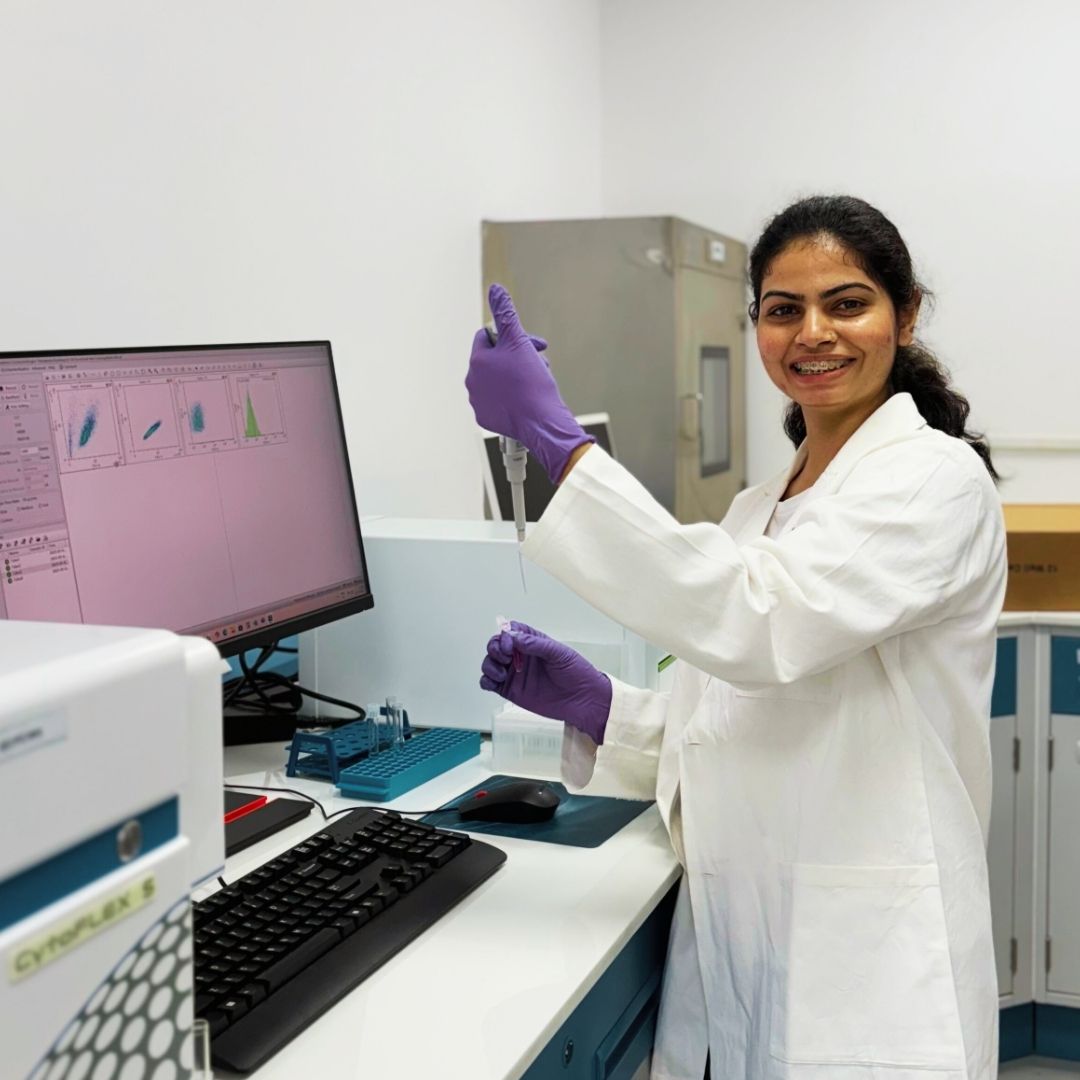Phage Display is a technology that has changed the game in the search for precision therapeutics, especially in areas like cancer immunotherapy,
infectious diseases, and autoimmune conditions. This powerful molecular tool is changing the way we discover and create antibodies. It speeds up
drug development, makes it more efficient and targeted.
At Cellogen Therapeutics, we employ the phage display in search of novel antibodies that are very specific and have a strong affinity for their targets. This speeds up the process of delivering new treatments from the lab to patients.
Phage display is an approach that genetically modifies bacteriophages, which are virus that infect bacteria, so that they display peptides or antibody fragments on their surface. Each phage carries the genetic information of a protein and links it to its displayed version on the surface. This results in a strong genotype-phenotype relationship. This makes it possible to make massive phage libraries, which can have billions of different antibody types. Then, a process called "biopanning" can be used to screen these libraries against a target antigen to find binders that are very specific and have a strong affinity for it. This iterative process mimics the natural selection of antibodies in the immune system, but it takes place entirely in vitro, offering unparalleled control and speed.
The utility of phage display goes far beyond discovery alone. Once antibodies are isolated, they can be humanized, affinity-matured, and engineered into full-length IgG molecules, scFvs, Fabs, or other formats, depending on how they are to be used. Integrating phage display-derived antibodies into cell-based immunotherapy platforms, especially CAR-T cell therapy, is one of the most exciting new areas of biotechnology right now.
The single-chain variable fragments (scFvs) used in chimeric antigen receptors derived from phage display libraries give the engineered T cells their unique ability to locate and kill cancer cells which display certain antigens on their surface. The flexibility and precision of phage display make it ideal for identifying binders that are both potent and safe, minimizing the risks of cross-reactivity and cytokine release syndrome. As CAR-T therapy evolves to address challenges like antigen escape or application to solid tumors, phage display remains essential for providing tailored, high-affinity targeting domains.
The clinical impact of phage display is well established. Regulatory agencies have approved a number of therapeutic monoclonal antibodies that were developed from phage display technology. Adalimumab (Humira), the first fully human monoclonal antibody approved by the FDA, is one of the most well-known. It is now one of the best-selling drugs in the world. Belimumab and Palivizumab are two other examples that show how well this platform works in both clinical and business settings.
We at Cellogen are working to render phage display even more powerful via integrating it with AI and machine learning. These technologies allow us to design highly diverse, optimized libraries, predict antibody-antigen interactions, and accelerate lead selection. n combination with our expertise in CAR-T development, biologics engineering, and functional screening, we are building a robust pipeline of therapeutic candidates targeting a wide range of diseases.
Phage display is more than just a technique; it's an indispensable part of the biologics discovery landscape. As we move forward, Cellogen Therapeutics is committed to harnessing its full potential to bring novel, life-saving therapies to the world.
- Therapeutic antibodies

.png)
(1)(1).jpg)

.png)
